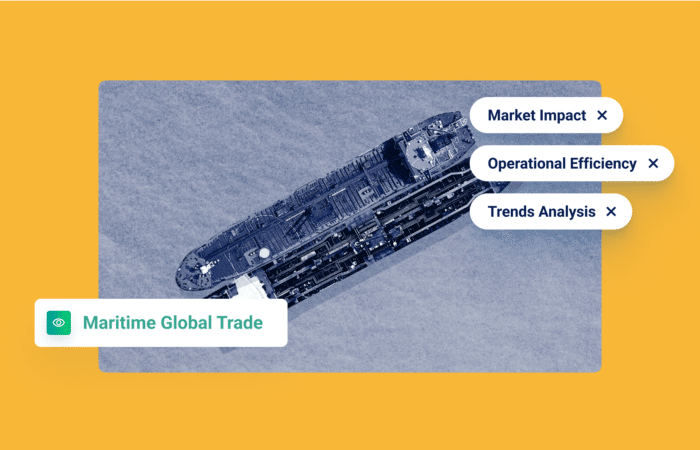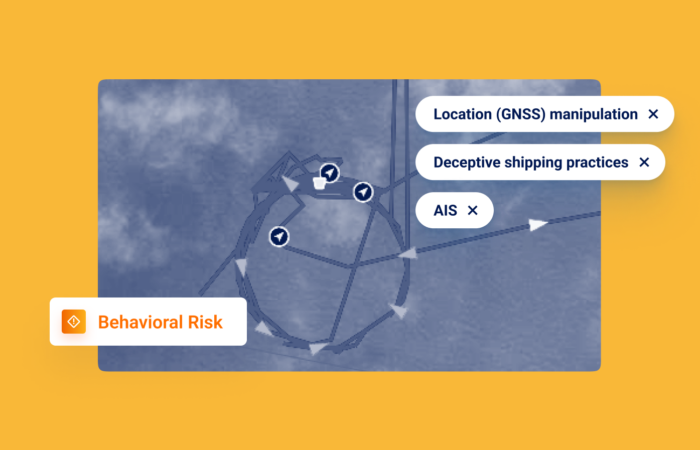What’s inside?
Deceptive shipping practices (DSPs) have become complicated, sophisticated, and nearly unrecognizable in recent years. This blog post, based on our comprehensive DSP guide, aims to provide you with an in-depth understanding of the evolving nature of DSPs, featuring a brief historical overview that sheds light on how we got here.
Deceptive actors are quick to adapt their tactics and exploit the vulnerabilities inherent in legacy systems, plus new vulnerabilities as they emerge. They constantly seek loopholes in existing regulations and sanctions, and leverage advancements in communication, logistics, and data manipulation, to try to stay ahead. This makes it difficult for businesses, regulatory bodies, and law enforcement agencies to develop and implement effective preventive measures in a timely manner.
Another factor: geopolitical conflicts often have a massive impact on the maritime ecosystem and Russia’s invasion of Ukraine triggered multiple rounds of sanctions that left organizations struggling to quickly comply. But there will always be a new conflict (unfortunately), or technological innovation someone will try to exploit.
By staying informed about the evolving nature of these practices, you can navigate the complex shipping landscape with confidence and protect yourself from falling victim to deceptive schemes.
Defining DSPs and the Intended Audience
DSPs are tactics utilized by bad actors to evade detection, sanctions, and regulations while engaging in illegal operations, such as oil smuggling and illegal trading. These practices can make it difficult to track the movement of cargo, identify the true owners of vessels, and enforce sanctions.
New tactics have emerged, making identity changes look as quaint as a 17th century tactic. An umbrella term called “spoofing” has been driving the maritime industry crazy with multiple interpretations. Within this concept, there are multiple tactics involving the use of various identities, transmitters, and even location (GNSS) manipulation methodologies that are growing at an exponential speed compared to previous deceptive shipping practices.

The Shift in 2020
An advisory published in May 2020 by U.S. authorities, including the Department of the Treasury’s Office of Foreign Assets Control (OFAC), Department of State and the Coast Guard, listed seven key DSP tactics commonly used by sanctions evaders to disguise illicit trade.
This was the first time U.S. authorities detailed the responsibilities and expectations that private businesses connected to the maritime sector must adhere to. Beyond merely mapping these practices, the advisory laid out recommendations for each industry on how to proactively conduct due diligence that can identify these practices, “in order to limit the risk of involvement with sanctionable or illicit activity.”
OFAC’s Impact
Why was this OFAC advisory such a seismic shift?
Previously, traditional sanctions screening best practices were built on “list matching”: every customer or transaction was screened against lists of designated people, organizations, and entities to identify blocked parties. This practice had its challenges around efficiency and accuracy, but in essence, it compared data with data to raise red flags on those already designated by sanctioning bodies. It didn’t deal with suspicions or gray areas, and had no predictive capabilities to stay ahead of the cat-and-mouse game.
The 2020 advisory was an acknowledgment that mere list screening for sanctions violators/illicit actors was too little, too late. AIS was widely depended upon to understand trading patterns during that period and it offered useful information, but raw blips are not enough in today’s era. Accurately detecting deceptive practices, such as AIS manipulation, ship-to-ship transfers, or voyage irregularities requires insights and predictive analytics. This type of input can only be created through a thorough investigation, applying domain expertise and context to the data to make sense of it and manage your risk.
Second, identifying DSPs often highlights potential sanctions evaders to avoid. The goal: identifying vessels and types of vessels that are at risk of designation, regardless of whether they are on a list or not. While list matching can be efficiently automated, every shipping-related transaction today needs to be analyzed individually by a domain expert before making a decision, making it costly and time-consuming. Let’s take a look at the seven DSPs identified by OFAC, as well as some of the newer ones.
To find and expose the hiders, and mitigate the damage they can cause, government agencies, traders, shipowners, and coast guards will need to quickly understand circumstances and contexts, via maritime expertise and an innovative artificial intelligence system that can automatically flag illicit activities and quickly determine what is actionable.
Our comprehensive deceptive shipping guide goes deeper, detailing:
- 3 categories of deceptive shipping practices to look out for
- The tremendous impact of Russia’s War
- How you can mitigate the damage caused by DSPs
- Much more!







